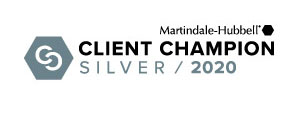Why leave money on the table?
As reported by FINRA.org on November 10, 2011.
Would you turn down free money? Many employers match an employee’s 401(k) contributions up to a certain percent of salary. If you contribute less than your employer is willing to match, you may be passing up free money.
According to a recent report,1 29.4 percent of 401(k) participants do not contribute enough to their 401(k) to receive their full employer match—with higher rates of foregone matches seen among younger workers age 20 to 29 (43 percent) and those automatically enrolled into an employer-sponsored defined contribution plan (41 percent). An earlier report showed that 40 percent of employees making less than $40,000 fall short of contributing the full extent of their employer’s match.2 Millions of workers are leaving money—free money—on the table.
FINRA is issuing this alert to educate investors about the substantial boost to their retirement savings that can come from taking full advantage of an employer’s matching contribution. As more and more companies reinstate matches that were cut or eliminated during the economic downturn, workers whose companies offer a match should make the most of it.
The Value of a Corporate Match
A 401(k) or similar employer-sponsored retirement plan can be a powerful resource for building a secure retirement—and an employer match can add a substantial amount to an employee’s nest egg. Let’s assume you are 30 years old, make $40,000 and contribute 3 percent of your salary ($1,200) to your 401(k). And, for the sake of this example, let’s also assume you continue to make the same salary and same contribution each year until you are 65. After 35 years, you will have contributed $42,000 to your 401(k).
Now let’s assume you get a match from your employer. One of the most common matches is a dollar-for-dollar match up to 3 percent of the employee’s salary. Taking full advantage of the match literally doubles your savings, even assuming no increase in the value of your investments: Instead of having set aside $42,000 by the time you retire, you will have set aside $84,000.

That’s $42,000 in free money. Looked at another way, it’s a no-cost way for you to increase your contributions by 100 percent.
Tax Advantages
In addition to offering the potential for free money through a match, employer-sponsored retirement plans can give you significant tax advantages. With a traditional 401(k), for instance, your contributions are made with pre-tax dollars—meaning the money goes into your retirement account before it gets taxed. In addition, your contributions, any match your employer provides and any earnings in the account (including interest, dividends and capital gains) are all tax-deferred. That means you don’t owe any income tax until you withdraw from your account, typically after you retire.
With pre-tax contributions, every dollar you save will reduce your current taxable income by an equal amount, which means you will owe less in income taxes for the year. But your take-home pay will go down by less than a dollar. Here’s how that works. Building on the example above, the $1,200 you contribute to a traditional 401(k) lowers your federal income tax bill for the year because you owe taxes on only $38,800 rather than $40,000. If you’re single, your total federal tax bill using the 2010 IRS tax rate schedule is $5,881.25 instead of $6,181.25—a tax savings of $300. And, for those in the 25 percent tax bracket, $1,200 in pre-tax dollars equals $900 in post-tax dollars—so the “cost” of your contribution measured as the impact on your paycheck might be less than you expected.
Matches and Roth 401(k)s
A growing number of employers offer a Roth 401(k) option, where employees make contributions with after-tax money—and neither the contributions nor any earnings they generate are taxed down the road when the money is withdrawn. While employers can match Roth-directed contributions, IRS rules require that all matched funds reside in a pre-tax account, just like employer-contributed matching funds in a traditional 401(k) account. As a consequence of this rule, the matching funds your employer contributes to your Roth 401(k) (and any earnings on those funds) will be taxed as ordinary income when you withdraw them. If you contribute to both a Roth and a traditional 401(k), the match is applied first to the traditional 401(k) amount and then, if necessary, to any Roth-directed funds.
Key Points to Remember
Not all employers provide matches—so if you are uncertain, ask your company’s human resources or benefits department. It’s also a good idea to find out what the maximum percent of salary your company will match.
Also be aware that even contributing at the match threshold may not be enough to fund a secure retirement. Most investment professionals recommend a savings level of 10 percent or more to generate enough replacement income during retirement to maintain your standard of living—and to start saving at this level as soon as you begin working.
The bottom line is that it makes no sense to pass up free money. A company match:
- Works out to a 100 percent increase in the amount of money you set aside each year that is matched, without incurring any risk—and remember you can, and probably should, contribute more than the match threshold.
- Offers the potential for tax-deferred compounding of that larger sum over time—specifically, your contributions plus the amount of the company’s match.
- Reduces the risk of falling short of the savings necessary to fund a secure retirement.
If you (or someone you know) have questions or concerns about your investments or other securities matter, please contact the Law Offices of Mitchell S. Ostwald at 916.388.5100 or email us at info@molaw.com





